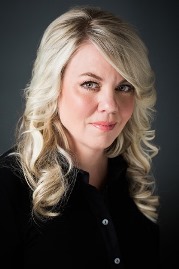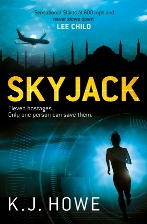 An avid
and frequent flyer, I consume everything I can about plane safety. The good news is that airline travel is more
secure today than it has ever been. And
the larger the plane and company, the safer you will be.
An avid
and frequent flyer, I consume everything I can about plane safety. The good news is that airline travel is more
secure today than it has ever been. And
the larger the plane and company, the safer you will be.
Still,
many people—my character Thea Paris included—have a palpable fear of
flying. Perhaps the total lack of
control rattles their nerves? Passengers
do put their lives in the hands of pilots when they board. This premise started my thriller mind
thinking …
Security
measures focus on keeping terrorists and other interlopers from entering the
cockpit. The cockpit doors have been
reinforced with a deadbolt, pilots have the ability to lock anyone out of the
cockpit, flight attendants block the aisle when pilots use the restrooms. There is a trap door, but it only works one
way, letting the pilots into the cabin.
Everything is focused on keeping the bad guys out.
But
what if the hijacker was already in the cockpit, in the captain’s seat?
Sadly,
this tragedy has occurred with more frequency in recent years. Examples include German Wings Flight 4U 9525
and Malaysian Flight MH370. Not every
pilot has the passengers’ best interests at heart. So I ran with this theme in SKYJACK.
To
research this book, I needed to study the history of aviation security and
hijacking to learn more about how today’s security measures evolved. Perhaps knowing this background might make
you a little more patient the next time you’re in a long security line.
The
Golden Days
Can you
imagine taking a flight without x-ray machines, security screenings or TSA
officers? Up until the early 1970’s, this was the reality of air
travel despite a large number of hijackings that took place between 1961 and
1970.
In
those “golden days” of skyjacks, most of the hijackings were driven by money or
as a protest against the Vietnam war—and they usually ended peacefully.
Many of the hijackers were motivated by sympathy towards the Cuban
revolution and simply wanted to land the plane in Cuba and “gift” the aircraft
to Fidel Castro.
Sure,
there was an economic cost to these events, but there was very little
bloodletting in the early days. Airlines and governments were willing to
absorb the economic costs of these crimes rather than invest the substantial
funds needed to provide effective security.
Still,
the US government created the FAA group to study hijackings, and they invited
suggestions from the public on how to battle this crime wave. The public didn't disappoint, sending in
thousands of suggestions, including:
· Requiring all passengers wear boxing gloves
so they couldn’t hold a gun.
· Arming flight attendants with tranquilizer
darts.
· Building a fake Havana Airport in Florida
to fool hijackers into thinking they had reached their destination, and then
arresting them when they exited the plane.
· And my personal favorite—installing a trap
door in the floor immediately outside of the cockpit so pilots could drop the
hijackers 20,000 feet when they tried to take over the plane.
None of
these ideas were ever implemented.
Of
course, the problem only worsened. Between 1968 and 1972, 130 American
aircraft were hijacked and motives were shifting. Ransom demands were
skyrocketing, and there were new political motives, many tied to Middle Eastern
conflicts. The destruction of property and the reality of violence were
becoming more severe and painful to endure. This backdrop gave me plenty
of fodder for SKYJACK.
Then
one event changed everything.
On Sept
6, 1970, the Popular Front for the Liberation of Palestine (PFLP) attempted
their most ambitious operation to date, trying to hijack four European
planes bound for the United States simultaneously and they succeeded in taking
control of three of them. On Sept 9, they hijacked yet another jet liner
bound for America. Three of these aircraft were flown to an abandoned
British airfield in Jordan called Dawson’s Field, which then became known as
Revolution Field. The hostages were removed from the aircraft and the
multi-million-dollar aircraft were summarily blown up in front of the gathered
media.
The
Jordanian government responded by declaring martial law and initiating military
operations against a number of radical political groups within the large Palestinian
refugee population ensconced in Jordan.
Over a
few weeks, all of the hostages from the hijacked aircraft were returned to
their home countries in exchange for the release of a number of Palestinian
radicals who were being held in prisons in various countries. This
ambitious and successful cluster of hijacking operations changed the shape of
the Middle East and world air travel forever.
Eerily,
on Sept 11, 1970, President Nixon began an initiative to deal with this new
crisis of air piracy. His immediate direction included steps to increase
security, including:
· Appointing the first 100 armed Air Marshals
to travel on aircraft.
· Enhancing international co-operation on
aircraft security.
· Applying x-ray technology previously
available only to the military to the civilian sector.
While
the programme began immediately, it was not fully implemented until after a
hijacking in 1972, where three convicted felons hijacked a commercial airliner
and threatened to fly it into a nuclear facility. By 1973, airports
looked very much like they do today.
Since
then, with the tragic exception of Sept 11, American and European passengers
and aircraft have rarely been the victims of hijackings. But they do
happen, and there are always vulnerabilities which I explored in SKYJACK. Still, the actions of Nixon and the
international community brought the epidemic of crime and terrorism in the
skies to a calmer place.
While
hijackings still do occur with some regularity in other countries, they tend to
occur outside of Europe and North America and do not get much coverage in
western media. Still, we need to remain vigilant to ensure this
safer trend continues.
To
enhance the authenticity in my latest book, I consulted test pilots, commercial
pilots, and military pilots, including a stealth bomber pilot. Thea Paris is shepherding two former child
soldiers from Nairobi to London, and she enters the not-so-friendly skies on a
very bumpy ride. SKYJACK is the perfect
novel to take on your next flight…I dare you.

Skyjack
by K.J Howe is published by Headline as a pbk original at £8.99 on 26th July
2018